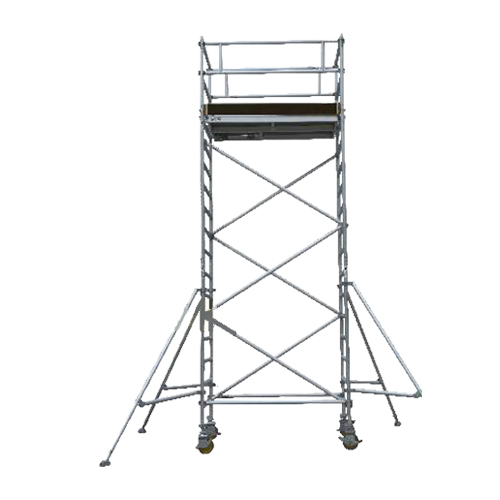Scaffolding is a temporary framework that workers use to support themselves while modifying or maintaining a building’s exterior or interior. They are often used as scaffold towers and building surfaces for construction and maintenance projects.
Today, aluminium scaffold towers are a must-have at every building site. Due to its flexibility, simplicity, and certainty of safety, the building process moves forward more quickly. But what is it? Let’s take a look!
What is aluminium scaffolding?
For building, remodeling, and repair jobs, aluminium scaffolding is becoming more and more popular. However, because of its plethora of advantages, its usage is also being seen in projects and businesses that are relevant, such as communications, fire protection, docks, railways, and docks.
An aluminium scaffold serves as a temporary platform or a provisional framework to support workers in normal building operations. Scaffold towers are a secure and practical access option for both interior and exterior building repairs. It aids those who need to operate at heights, including construction workers, inspectors, cleaners, and other laborers.
Explaining the load capacity of aluminium scaffolding
Depending on the load that they can sustain, called the load capacity, aluminium scaffolding systems are classified into three categories.
- Light-duty scaffolds: For light-duty scaffolds, the maximum load capacity is 120kg.
- Medium-duty scaffolding: For Medium-duty scaffolds, the load capacity is around 240 kg
- Heavy-duty scaffolding system: A heavy-duty scaffolding system can support over 240 kg.
To calculate the load capacity of the aluminium scaffold for sale, you can use a height-to-base ratio of 4:1.
What is the height-to-base ratio of 4:1? It implies that a scaffold’s height could be four times its base width. For instance, a scaffolding structure with a 4-meter base width is allowed to have a maximum height of 16 meters.
Another vital aspect to take into account while determining the height of the building is the wind factor. It should have a 3:1 ratio if you want to keep your movable aluminium scaffolding safe against strong winds.
Types of scaffolding in the construction sector:
According to the particular requirements of a building project, construction workers use several scaffoldings, each of which normally has its own distinct traits and advantages. Here are the best of it.
- Single Scaffolding
A single structure of standards, ledgers, and putlogs that are tied together makes up a single scaffolding. A single scaffold is built perpendicularly up against a wall, about 1.2 meters away.
- Double Scaffolding
Double scaffolding is utilized for stone masonry projects much as single scaffolding. The structure’s two rows of scaffoldings, which were joined to form a sturdier frame, are where its name comes from. Since double scaffolding is stronger and sturdier than the other two forms of scaffolding, some construction workers prefer leveraging it.
- Cantilever Scaffolding
Cantilever scaffolding is an extra scaffold designed to extend outside a structure. When building scaffolding from the ground is impossible due to obstructions, cantilever scaffoldings are created. This scaffolding has restricted use and needs many inspections before installation.
- Aluminium Scaffolding
Due to its lightweight and mobility, scaffoldings made of aluminium are simple to erect and frequently used for painting projects, installing electrical cables, and fixing things.
- Steel Scaffolding
Steel scaffolding consistently holds the top spot among the many scaffolding systems, especially in terms of its durability and security. Steel scaffolding is similar to single scaffolding, with the exception that steel is used as the scaffolding material instead of the original bamboo or wood.
- Scaffold Towers
Scaffold towers, commonly referred to as patented scaffoldings, are constructed using unique couplings and steel frames. Construction workers operating at heights use this scaffolding due to its incredibly high scaffold surfaces.
- Trestle Scaffolding
The trestle scaffolding is supported by tripod-like mobile ladders and is typically used indoors for repairs, painting projects, and electrical wire maintenance. The trestle scaffolding has a height restriction of 5 meters.
- Kwikstage Scaffolding
This scaffold is made of galvanized steel and can mold itself to the contour of the building being constructed. Angular structures or directional bridges often use kwikstage scaffolding.
The Bottom Line:
Knowing the advantages of each type of scaffolding system is essential if you want to select the one that best suits the needs of your company. This will help to ensure that you are happy with the scaffolding product you buy.
Get in touch with FMA Factory, your scaffolding manufacturer in Qatar right away if you want more help or if you wish to purchase the best aluminium scaffold for sale!

